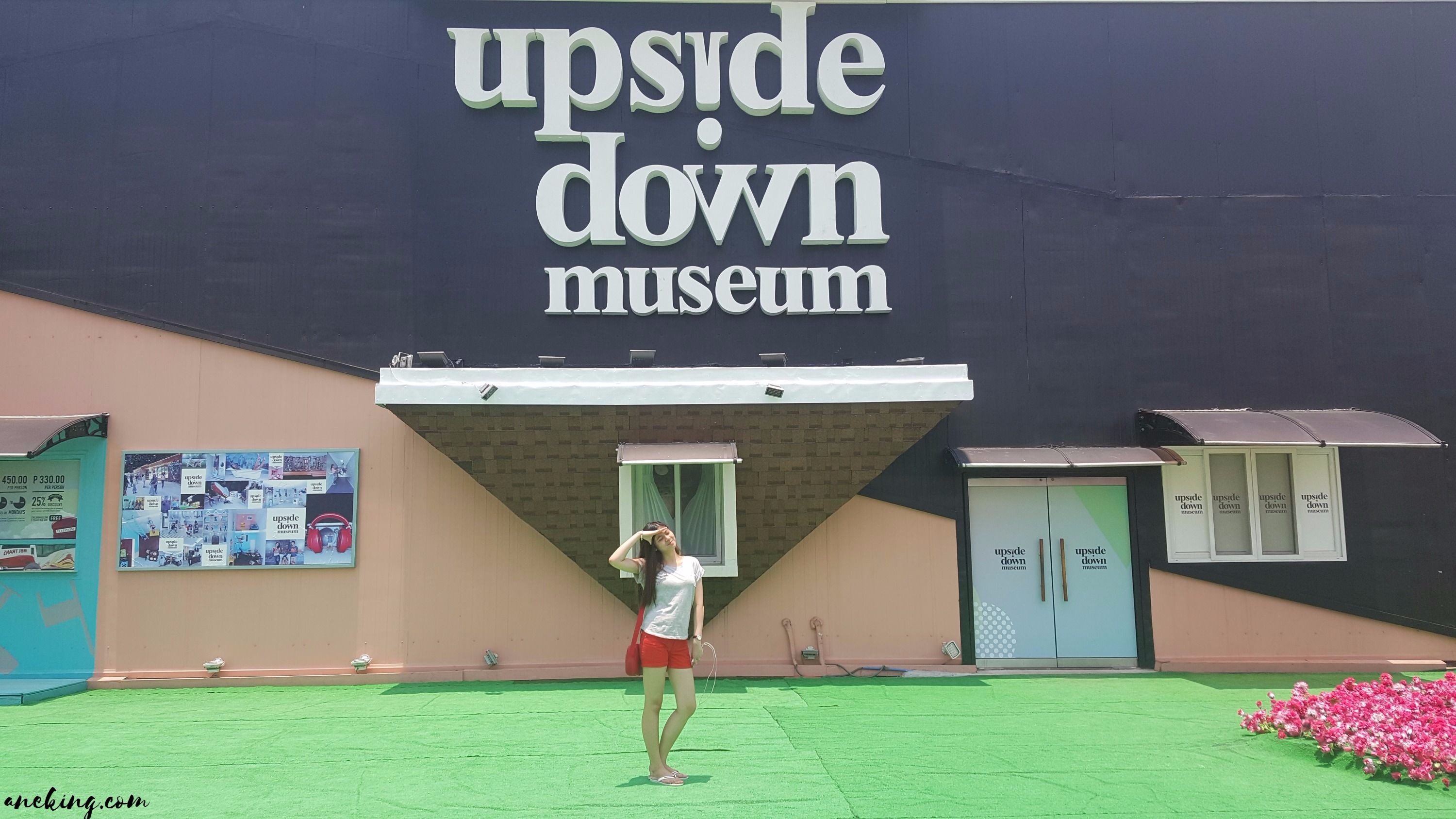A Prisoner’s Life At Hoa Lo Prison
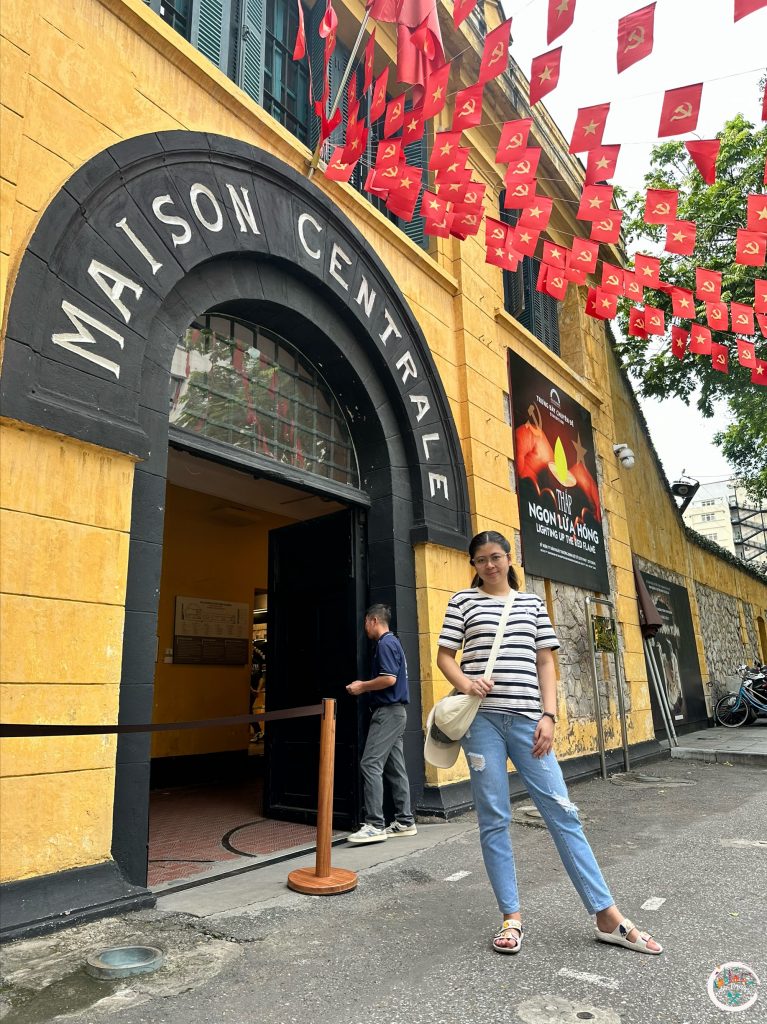
To immerse deeply into the culture of Vietnam, tourists and travelers, whose aim is to discover more about the country, always start to learn from the root, which is the history of Vietnam.
Through the popular musical, Miss Saigon, I am aware that Vietnam has undergone decades of suffering in Vietnam War. And when I finally arrived in Hanoi, I perceived the influence of French into the architecture of the structures in the country and into the Vietnamese cuisine as well. With this influence, I knew there’s a history of colonization between French and Vietnamese. It’s indeed a long chronicle before the establishment of the Communist Party of Vietnam.
One popular destination for this knowledge is the Hoa Lo Prison. Recognized as a historical monument by the Ministry of Culture, Sports, and Tourism in 1997, Hoa Lo is a prison with many names and many chapters in a story that has been interwoven with the fate of Vietnam since its construction. Hence, the Vietnamese couldn’t just erase the structure forever. Instead, the government demolished a big part and turned one side of the prison’s compound into a museum. The aim is to bring visitors closer to the experiences of its prisoners.
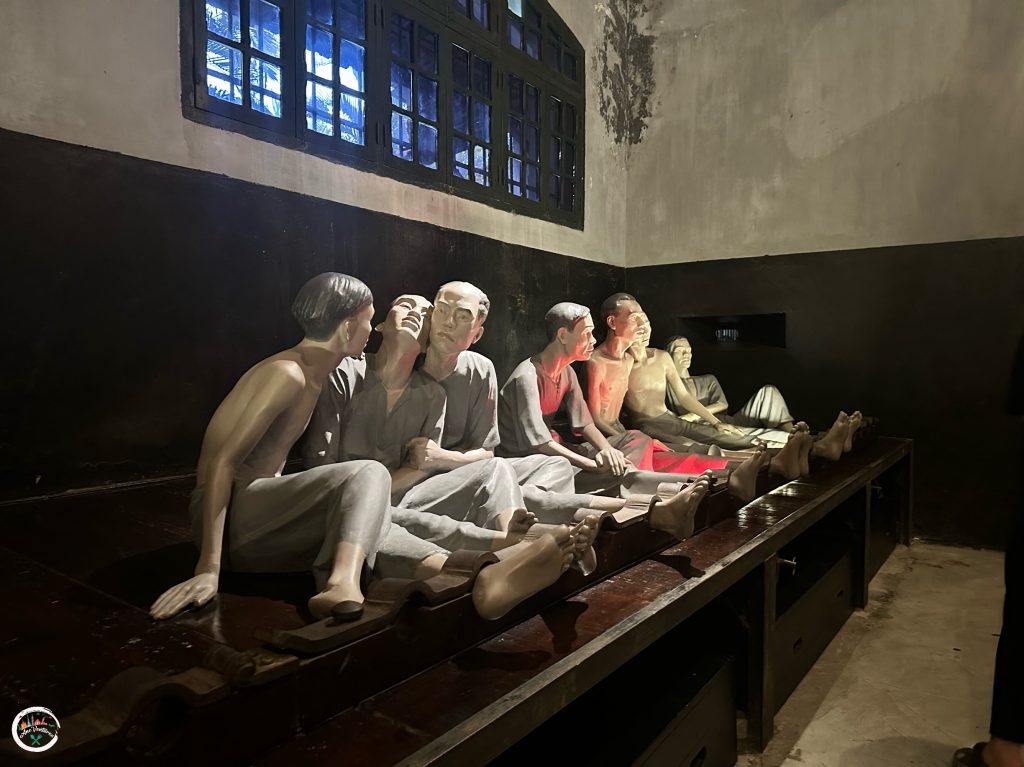
As per Vinpearl, when Vietnam was still a part of French Indochina, the French began constructing Hoa Lo Prison in 1896 and finished it in 1901. The prison was used to lock up political prisoners fighting for independence in the war. By 1954, it housed almost 2,000 inmates, who were shackled to walls by the dozen and lived in appalling conditions. Several Vietnamese revolutionaries were put under the barbarous guillotine, which the French had used throughout the region.
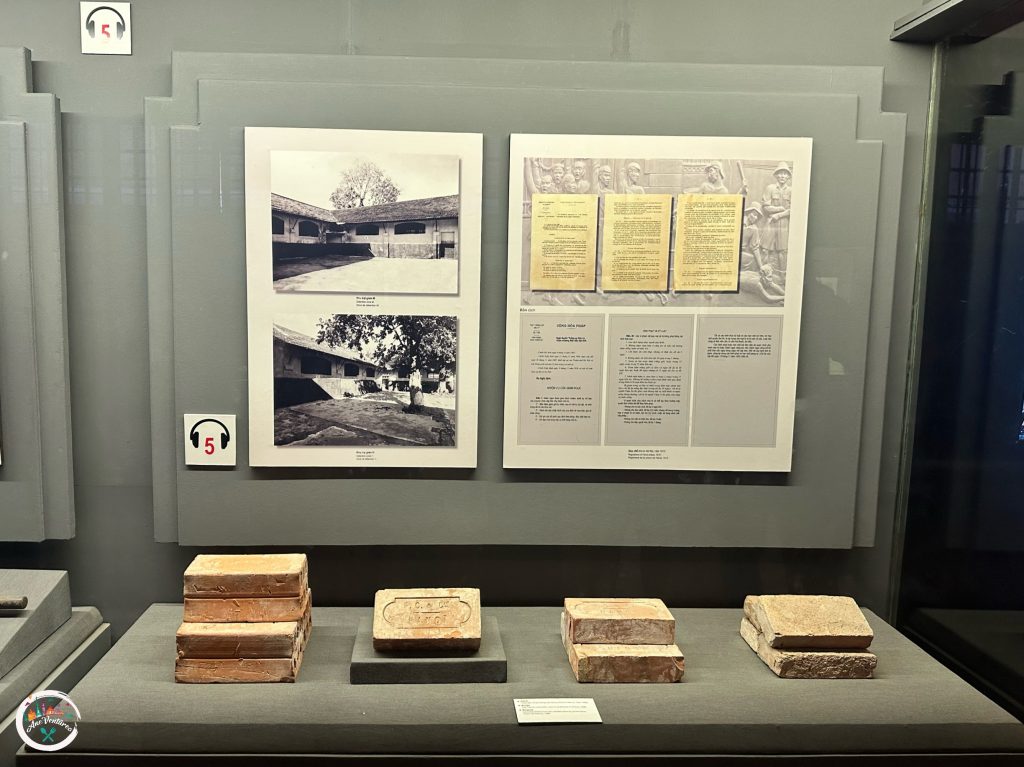
Brittanica stated that after the establishment of the Democratic Republic of Vietnam and when the French left Hanoi in 1954, the Hoa Lo Prison was initially used as an education center for revolutionary doctrine, but with increasing American involvement in the Vietnam War, it began housing American prisoners of war in 1964, and the facility was used until 1973. Inmates were kept shackled to their beds and were tortured and abused in violation of the Geneva Conventions. Perhaps, the most famous prisoner was U.S. Senator John Mccain.

The tour utilizes a carefully crafted landscape of lights and sounds to bring visitors inside the life of the prison, with dark lighting and ambient sounds creating a brooding, oppressive atmosphere. This gives visitors a small taste of the harsh conditions and suffering endured by the prisoners. We even witnessed the cell blocks and two rows of long slab tables, where prisoners spent their days bound at the ankle and sandwiched between their comrades.
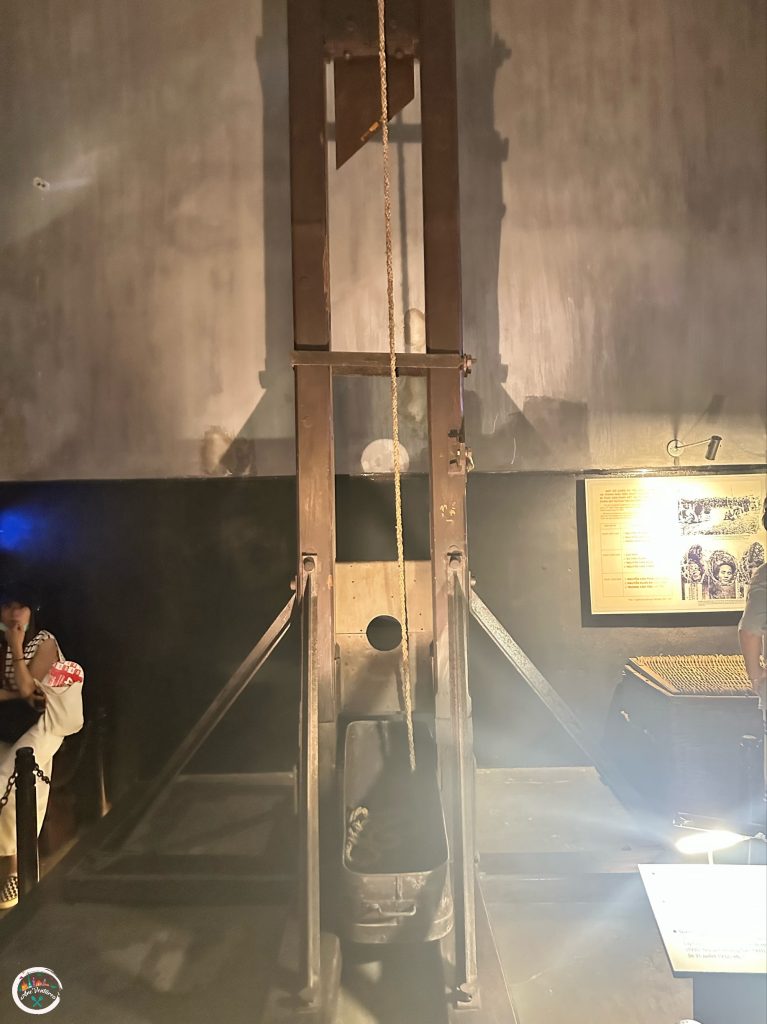
The first part of the tour are the relics and images of the past. We saw the bricks and materials used to build the prison. The original gate was still there. We saw the kitchenwares used by the prisoners. There’s the uncovered toilet for everyone that is just a box with a hole. The different types of French torture equipments from the smallest ones to the biggest ones are also displayed.
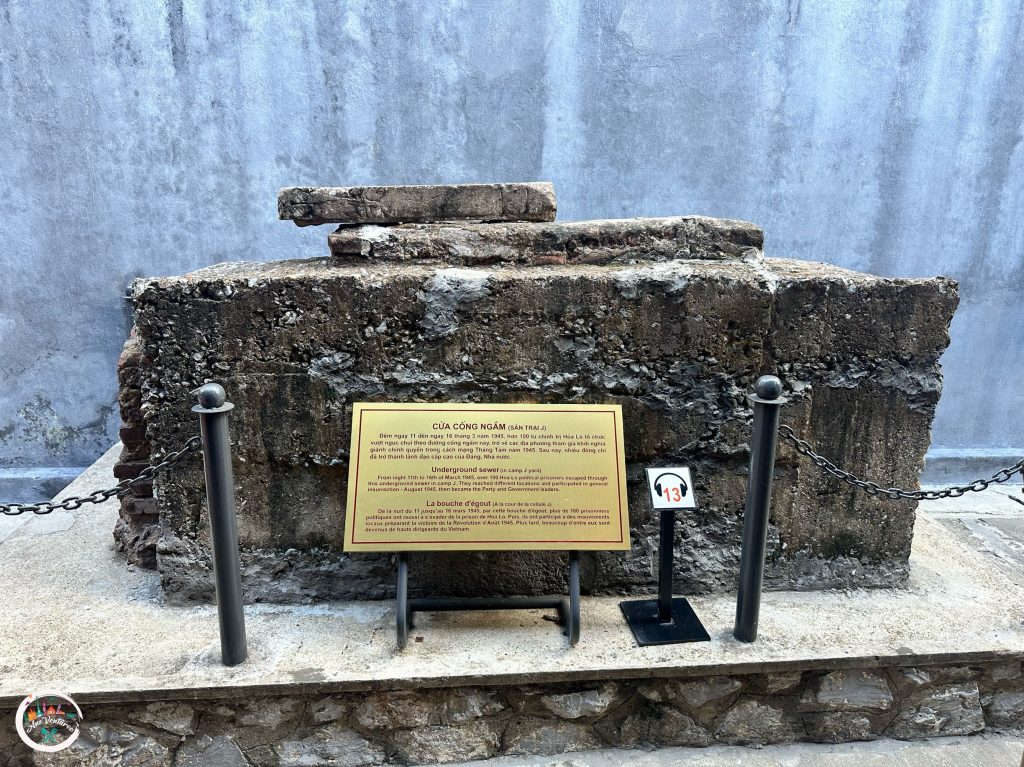
According to Vietnam’s official tourism website, that in 1951, 17 death-row prisoners cut through prison bars to escape through tunnels into the sewer. Upon exiting the sewer, they encountered a patrol of soldiers, and only 5 survived to join the resistance. Visitors on the night tour are given a chance to see the tunnels through which they escaped, complete with a replica of inmate Vo Duc Chinh cutting through the bars.
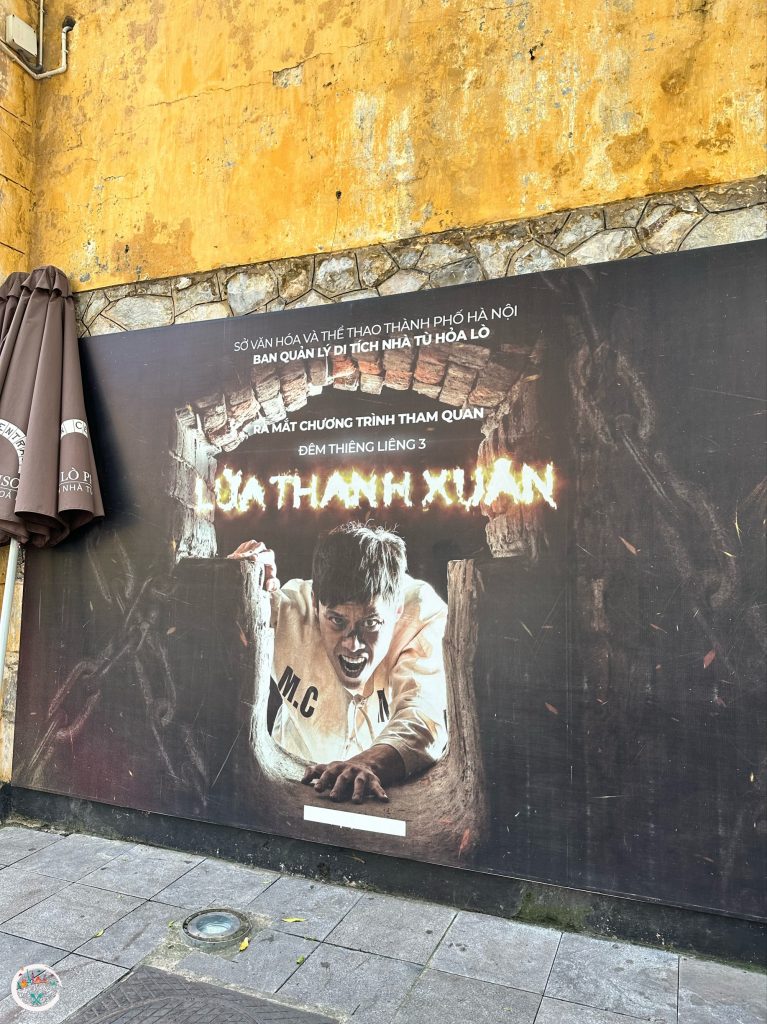
Seeing this poster at the entrance, I assume that the museum is conducting presentations. In this way, they can properly convey and storytell the history of Hoa Lo Prison. I wish I knew about this show when I was planning our Hanoi itinerary because I would definitely watch it. Let’s be honset. Museums displaying relics aren’t enough to fully inform the guests so plays like this is indeed a great help in understanding the history.

By the end of the tour, we passed by souvenir shops that offer remembrances and products with marks of Hoa Lo Prison, Vietnamese culture and Vietnam’s famous tourists destinations. There’s also a food store. I wonder if there’s a coffee shop in the compounf. I just think that museum date with coffee after the trip is a great idea. But if there’s not, I know, for sure, that the museum is surrounded with lovely cafes.
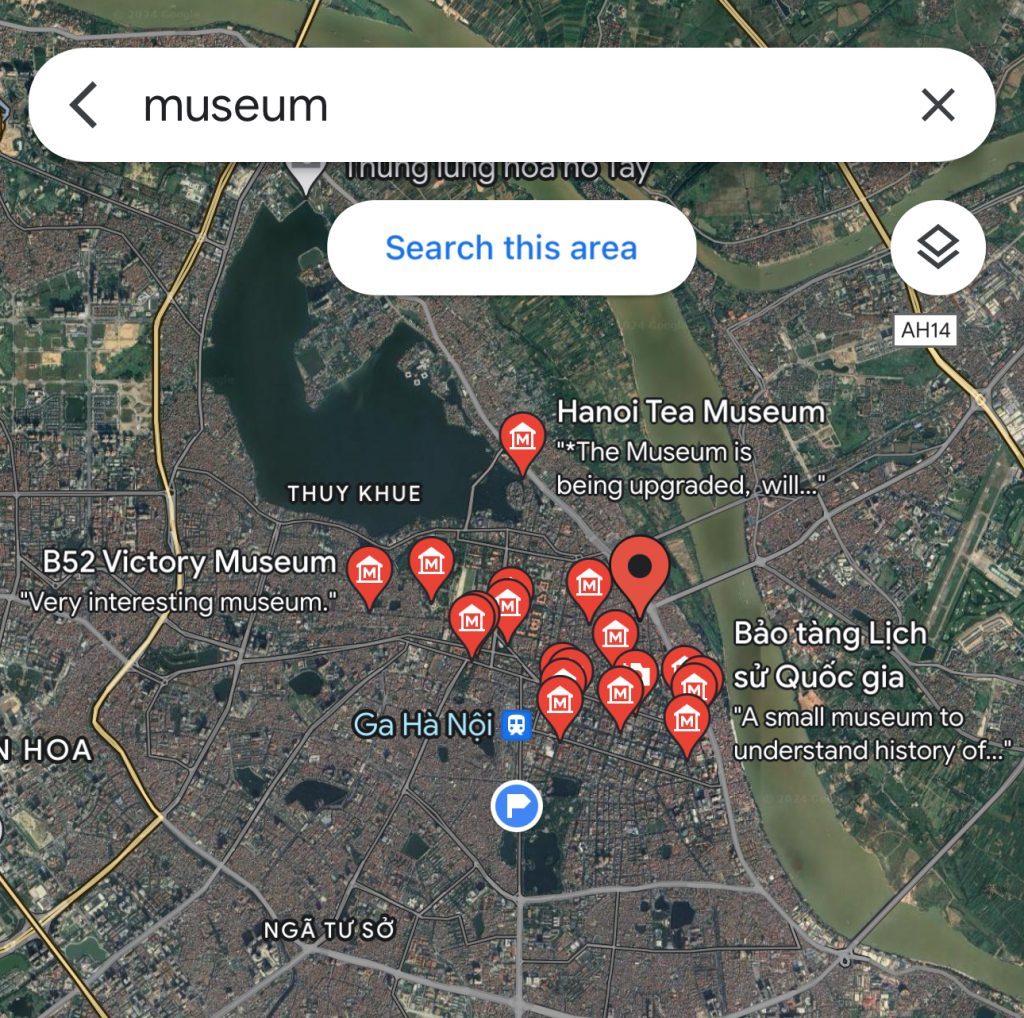
Looking at the map, I discovered that there are a lot more history museums in Hoan Kiem district. This just shows how rich and dark Vietnam’s history is. They have a lot to look back on. The mentioned history museums are the following.
- Museum of Vietnamese Revolution, a museum that recreates the history of the struggles of Vietnamse people to regain independence and freedom for Vietnam
- Vietnam National Museum of History, a museum that displays ancient artifact and Buddhist art
- Hanoi Police Museum, a museum chronicling the history of police in Hanoi via gear, uniform and photo displays
- Vietnam Border Museum, a museum that shows the strategies and tactics of ancestors in affirming national territorial sovereignty
- People’s Public Security Museum, a museum for documents and artifacts associated with the People’s Public Security force
- Vietnamese Women’s Museum, a museum that depicts the contributions of women to Vietnam society
- Heritage Homes, a classic museum built in late 20th century

This kind of tourist spots is not my cup of tea but I was willing to learn if only the museum helped me and its visitors engage into the stories behind the displays and not just show written descriptions. Personally, I got uninterested in some parts of the tour because the narratives are very long. I won’t consume my time on them. I can’t even get near to these posters because the rooms were crowded. Thankfully, there is internet so I somehow grasp what’s inside the museum.
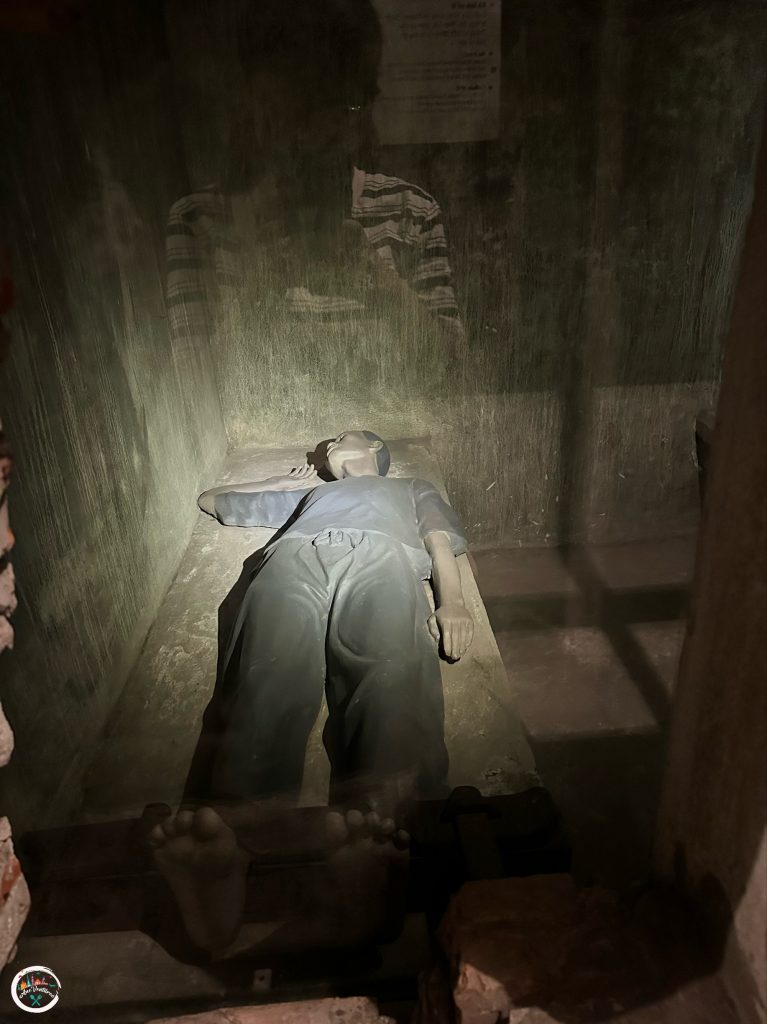
Well, they offer English voice audios that narrate the details of each pieces. But sadly, we need to pay extra fees for the headphones. If they really want to convey their story to the world, it should be conveniently available to those who paid for museum’s entrance fee. Now, I’m thinking that the museum is not for tourists. It is for the new and future generations of Vietnamese people who needed to learn about their own history.



